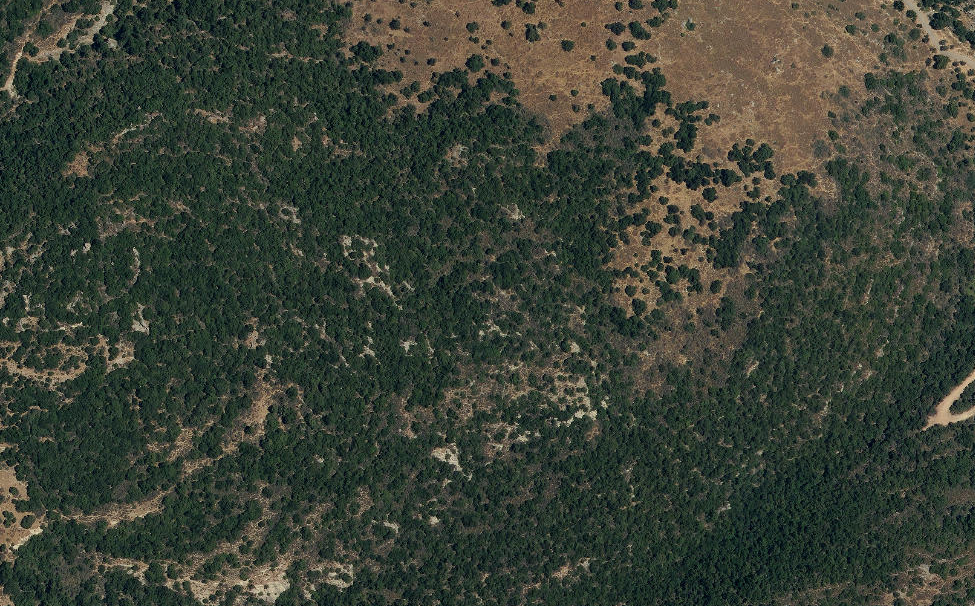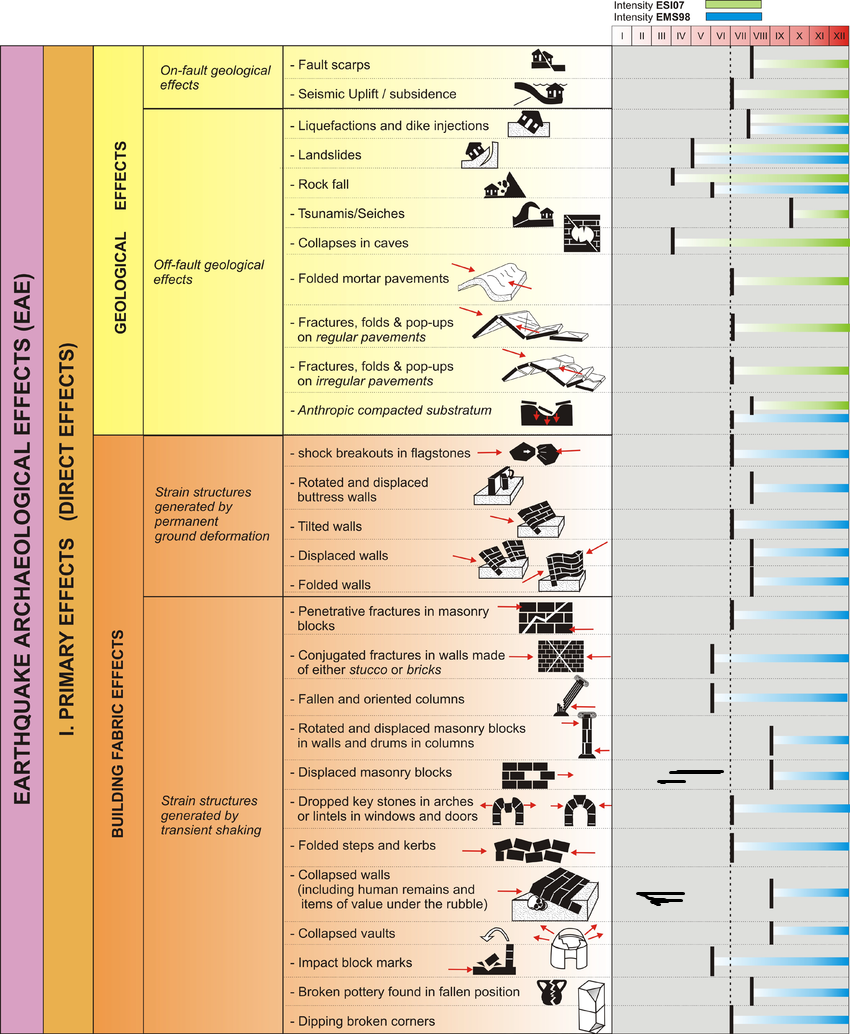Meiron
 Approximate location of Meiron
Approximate location of Meironclick on image to explore this site on a new tab in govmap.gov.il
from www.govmap.gov.il
| Transliterated Name | Source | Name |
|---|---|---|
| Meiron | Hebrew | קדומה |
| Mayrûn | Arabic | ميرون |
| Meron | Josephus | |
| Meroth | Josephus | |
| Marum | Tiglath-pileser III's accounts (733-732 BCE) | |
| Merom | Canaanite - mentioned in 2nd millennium BCE Egyptian source | |
| Meroma | Canaanite | |
Meiron, not to be confused with Meron in Joshua 11:5, 11:7, is situated just north of Wadi Meiron, along one of the eastern foothills of Mount Meiron, or Jebel Jarmuq (map reference 1915.2664) in Upper Galilee. Josephus lists a Meron/Meroth as one of the villages fortified by him in 66 CE (Life 188; War II, 573). It is also named as one of the border settlements of Upper Galilee (War III, 40). Rabbinic sources preserve the form Meiron (Tosefta, Dem. 4, 13) and place the ministry of Rabbi Simeon Bar Yohai here. His grave and that of his son Eliezer are reputed to be in Meiron.
Meiron's closest neighbor is Khirbet Shema, barely 1 km (0.6 mi.) to the south, identified as Tekoa of Galilee and probably a suburb of Meiron in the first century CE. Both sites made use of the spring of Meiron, probably to be identified as 'Ein Hatra. Meiron is also one of the villages mentioned in the list of priestly courses (1 Chr. 24; Mishnah, Ta'an. 4:2; Tosefta, Dem. 4, 13) as the seat of the family Jehoiarib. Like Khirbet Shema' and Gush Halav, it is well known for its production of olive oil in the Talmudic period (J.T., Shevi'it 38d). By late medieval times, Meiron had become an important pilgrimage center, its sanctity deriving from the mystical traditions of Bar Yohai, the festival of Lag ba-'Omer, and the centrality of Safed (9 km [5.5 mi.] to the east) in the development of Lurianic mysticism.
The excavations at ancient Meiron were conducted over the course of five seasons (1971-1972, 1974-1975, and in 1977) under the auspices of the American Schools of Oriental Research. The work began as a rescue operation in the lower city (field I) and as part of the Khirbet Shema' expedition. Full-scale work was undertaken under the directorship of E. M. Meyers.
- Fig. 1 - Location Map
from Magness (1997)

 Figure 1
Figure 1
Map of Galilee showing the location of Khirbet Shema'
(reproduced with permission, and modified from Meyers, Strange, and Meyers 1981: fig. 1.2).
Magness (1997) - Fig. 1 - Location Map
from Meyers, Strange, and Groh (1978)

 Fig. 1
Fig. 1
Map of sites surveyed with other important sites
Meyers, Strange, and Groh (1978) - Fig. 2 - Topographic map
showing location of Khirbet Shema' and Meiron from Meyers et al (1972)

 Figure 2
Figure 2
Topographic map indicates that Meiron and Khirbet Shema' are separated only by the Wadi Meiron. Both sites are less than 10 km. from Safed.
Drawing and photo by John F. Thompson
Magness (1997)
- Approximate location of Meiron in Google Earth
- Approximate location of Meiron on govmap.gov.il
- Plan of the Synagogue from
Stern et al (1993)

 Plan of the Synagogue
Plan of the Synagogue
Stern et al (1993)
| Stratum | Date | Description |
|---|---|---|
| I | 200-50 BCE | Scattered artifactual remains; traces of structures |
| II | 50 BCE-135 CE | Limited architecture and related artifacts; probably a small, growing village |
| III | 135-250 CE | First major insula; village expansion |
| IV | 250-365 CE | Peak of village life; synagogue built; gradual abandonment begins at end of stratum |
| V | 365-750 CE | Village largely abandoned; several small finds, either from a nomadic settlement or wayfarers |
| VI | 750-1000 CE | Renewed, small-scale settlement of village |
| VIIA | 11th-13th cent. CE | Continuation of permanent settlement |
| VIIB | 14th cent. CE | Extinction begins |
Eric M. Meyers in Stern et al (1993) summarized Meiron's history as follows
The population grew steadily from Late Hellenistic times but especially after the wars with Rome; its most productive era was the third and fourth centuries CE; its economic orbit was northern, oriented toward the port of Tyre; conditions from the period of Gallus Caesar (351~352 CE) to the great earthquake of 363 CE conspired to create a situation that resulted in systematic abandonmentMeyers, Meyers, and Strange (1974), Meyers, Strange, and Meyers (1978), and Meyers and Meyers (1978) posited that Meiron was abandoned rather than destroyed in the middle of the 4th century CE. However, as noted by Russell (1980), their excavation evidence may suggest that the site was destroyed by the northern Cyril Quake of 363 CE; as well as abandoned. A thick destruction layer was found in multiple rooms of the lower city ( Site M I ) as well as the northern suburb of the city ( Site M II ). Further, in what the excavators believed was a store room of the so-called 'Patrician House', they discovered crushed storage jars still containing remnants of stored food. The stored food was interpreted by Eric M. Meyers in Stern et al (1993) as follows
A strange fact came to light when the small finds (a bell and a sickle) and the food remains (identified as nuts, wheat, barley, and beans) from the Patrician House were examined. The food was placed in the storage jars in a charred and inedible state, inside a sealed room with no convenient access. On one of the storage jars the word "fire" was carved, while on another an inscription read "belonging to Julia (or Julian)." Apparently, the room had been a deposit area for a pious individual or family-possibly descended from the line of priests who settled in Meiron after the destruction of the Temple. The finds and food had been dedicated to the Lord as heqdesh (consecrated items) and hence purposely rendered unusable-the foods by charring, the bell by not having a clapper, and the sickle by not having a handle. The contents of this house undoubtedly reflect the religious views of the people who lived here.Coin and pottery evidence apparently dates this abandonment to ~360 CE (Meyers and Meyers, 1978). Meyers, Strange, and Groh (1978) report that in the stratum of interest (III) no stratified coins were found dating to after 360 CE.
Magness (2012) redated the chronology of the original excavators. Her analysis is repeated in its entirety in Magness and Schindler (2015). This analysis redated construction of the houses to "the second half of the fourth century and first half of the fifth century, which means that occupation ended a full century later than the excavators believe." This was based on coin and ceramic evidence. In particular, Magness and Schindler (2015) identified some post 363 CE coins and ceramics as not intrusive which the original excavators viewed as intrusive.
| Effect(s) | Location | Image(s) | Description |
|---|---|---|---|
| Collapsed Walls | multiple rooms of the lower city (Site M I) as well as the northern suburb of the city (Site M II) including the store room of the so-called 'Patrician House' |
|
-
Earthquake Archeological Effects chart
of Rodríguez-Pascua et al (2013: 221-224)

 Earthquake Archeological Effects (EAE)
Earthquake Archeological Effects (EAE)
Rodríguez-Pascua et al (2013: 221-224)
| Effect(s) | Location | Image(s) | Description | Intensity |
|---|---|---|---|---|
| Collapsed Walls | multiple rooms of the lower city (Site M I) as well as the northern suburb of the city (Site M II) including the store room of the so-called 'Patrician House' |
|
VIII+ |
Magness, J. (2012). Did Galilee Experience a Settlement Crisis in the Mid-Fourth Century ?
in Jewish Identities in Antiquity: Studies in Memory of Menahem Stern. ed. Lee I. Levine and Daniel R. Schwartz Tübingen, Mohr Siebeck. 43.
Magness, Jodi and Daniel, S. (2015). "Pottery and Jewish Settlement in Late Roman Galilee." Bulletin of the American Schools of Oriental Research(374): 191-207.
Meyers, C. L., et al. (1974). "Excavations at Meiron, in Upper Galilee. 1971, 1972:
A Preliminary Report." Bulletin of the American Schools of Oriental Research(214): 2-25.
Meyers, E., et al. (1978). "Excavations at Meiron in Upper Galilee-1974, 1975: Second Preliminary Report."
Annual of the American Schools of Oriental Research 43: 73-108.
Meyers, E. M., and Meyers, C. L. (1978). "Digging the Talmud in Ancient Meiron." Biblical Archaeology Review 4: 32-42.
Meyers, Meyers,and Strange (1978) Excavations at Meiron in Upper Galilee-19741975: Second Preliminary Report. Annual of the
American Schools of Oriental Research 43: 73-98.
J. Garstang, Joshua-Judges, London 1931, 101-102, 19lff.
Abel, GP 2, 385; N. Feig, ESI 7-8 (1988-1989), 127-128.
R. S. Hanson, Tyrian Influence in the Upper Galilee (Meiron Excavation Project 2),
Cambridge, Mass. 1980
E. M. Meyers et al., Excavations at Ancient Meiron, Upper Galilee, Israel, 1971-
1972, 1974-1975 (Meiron Excavation Project 3), Cambridge, Mass. 1981
J. Raynor andY. Meshorer,
The Coins of Ancient Meiron (Meiron Excavation Project 4), Winona Lake, Ind. 1988.
E. Atkinson, PEQ 10 (1878), 24-27
Kohl-Watzinger, Synagogen, 80-88, pl. 11
Goodenough, Jewish Symbols l, 200-201
12, 42
E. M. Meyers (eta!.), IEJ22 (1972), 174-176
24(1974), 279-
280
25 (1975), 174-176
28 (1978), 126-128
id., BASOR 214 (1974), 2-25
230 (1978), 1-24
id., RB 83
(1976), 91-96
85 (1978), 109-112
id., AASOR 43 (1978), 73-98
id., BAR 4/2 (1978), 32-42
id., BA 43
(1980), 97-108
id., Excavations at Ancient Meiron (Reviews), Biblica 65 (1984), 579-580.- PEQ 117
(1985), 78-79.- IEJ 37 (1987), 262-269
id., City, Town and Countryside in the Early Byzantine Era (ed.
R. Hohlfelder), New York 1982, 115-132
A. D. Ritterspach, BASOR 215 (1974), 19-29
R. S. Hanson,
AASOR 43 (1978), 99-103
C. Meyers and E. M. Meyers, BAlAS 1982-1983, 32-36.
E. Damati, ESI 10 (1991), 72–73
E. M. Meyers, ABD, 4, New York 1992, 682–683
id., BASOR 297 (1995),
17–26
id., OEANE, 3, New York 1997, 469–470
id., Symbiosis, Symbolism and the Power of the Past,
Winona Lake, IN 2003, 487–499
A. Kindler, JQR 84 (1993), 104 (Review)
K. Meisel Galor, Domestic
Architecture in Galilee and Golan during the Roman and Byzantine Periods (1st Century B.C. to 7th Century
A.D.) (Ph.D. diss.), Ann Arbor, MI 1996
id., Miscellanea Mediterranea (ed. R. R. Holloway), Providence,
RI 2000, 109–124
id., NEA 66 (2003), 44–57
R. Horsley, BASOR 297 (1995), 5–16, 27–28
Z. Safrai, The
Missing Century: Palestine in the 5th Century—Growth and Decline (Palestine Antiqua N.S. 9), Leuven
1998 (index)
N. Feig, ‘Atiqot 43 (2002), 87–107
R. Kool & D. T. Ariel, ibid., 109–114
Y. Stepansky, ESI
115 (2003), 5*–6*
E. Yehuda, Jahrbuch des Deutschen Evangelischen Instituts für Altertumswissenschaft
des Heiligen Landes 9 (2003), 9–25.
